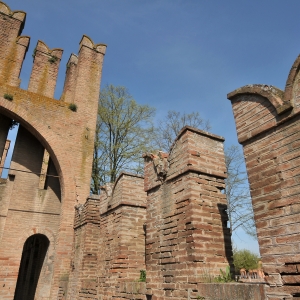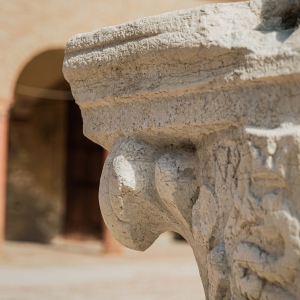Castello di Bentivoglio
Bentivoglio is the name of the noble Bolognese family that had its castle built here between 1475 and 1481, a 'Domus Jocunditatis' made by Giovanni II Bentivoglio to be used for recreation and hunting with dogs and falcons, as well as fishing. At the time, the village was called Ponte Poledrano. The
building has a square plan and presents the characteristics of a typical Renaissance country residence without excessive defensive
purposes, with two airy porticoes, a large and bright courtyard, large windows, cosy rooms with annexed services and stables and simple corridors with lively decorations.
The Sala dei Cinque Camini and the Sala del Pane (Bread Room) deserve a special mention. It is so called because of the authentic pearl of 15th-century art that it houses: the "Storie del pane" (Bread stories), an extraordinary cycle of ten frescoes of the Ferrara school that retrace the various stages of bread-making, from sowing to the courtly banquet.
Guests of Giovanni II Bentivoglio and his wife Ginevra Sforza were the Dukes of Ferrara Ercole I and Alfonso I, Lucrezia Borgia, Pope Julius II and other Renaissance lords, who often came to the castle by boat.
Today, the castle houses the research laboratories of the 'Ramazzini' Cancer Research Institute and is used as a venue for various cultural events organised by the municipal administration, including the 'Chamber Music Festival', during which guided tours are also organised by appointment.




